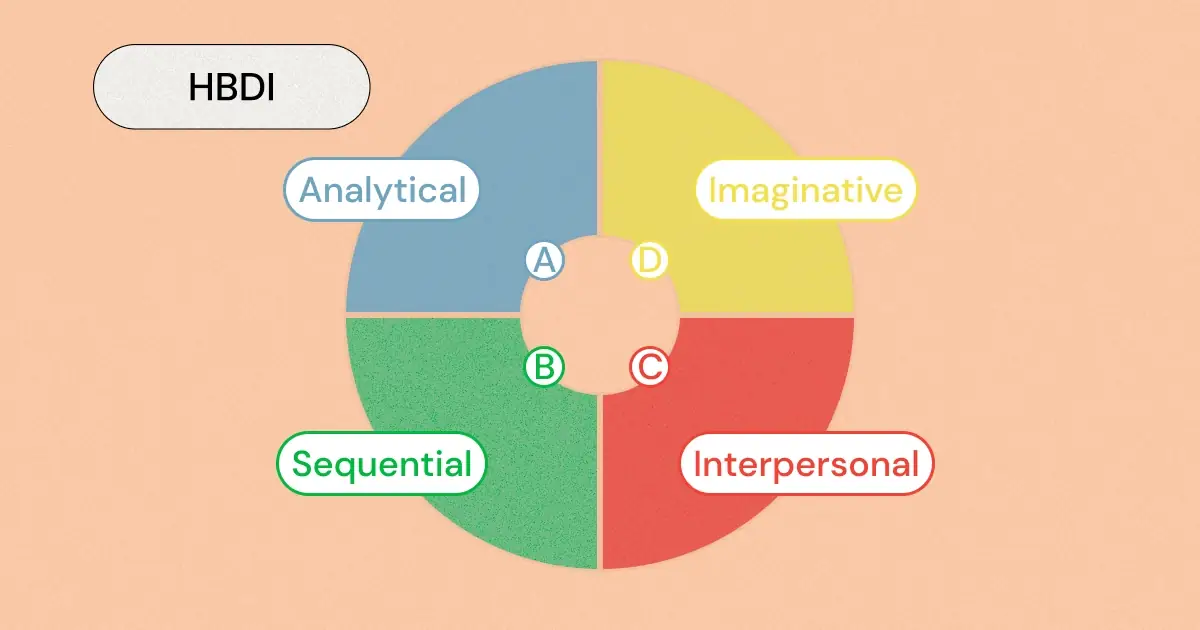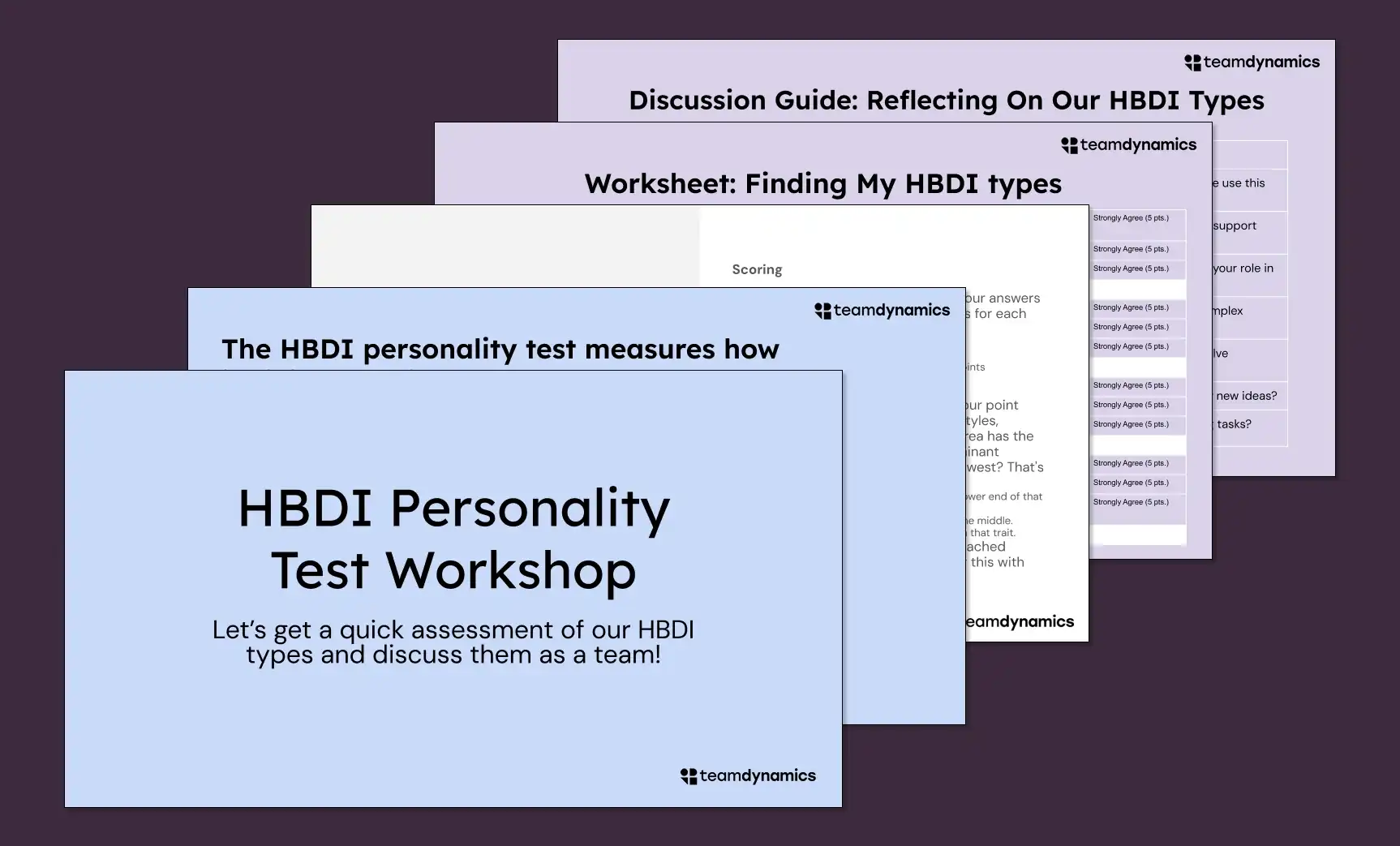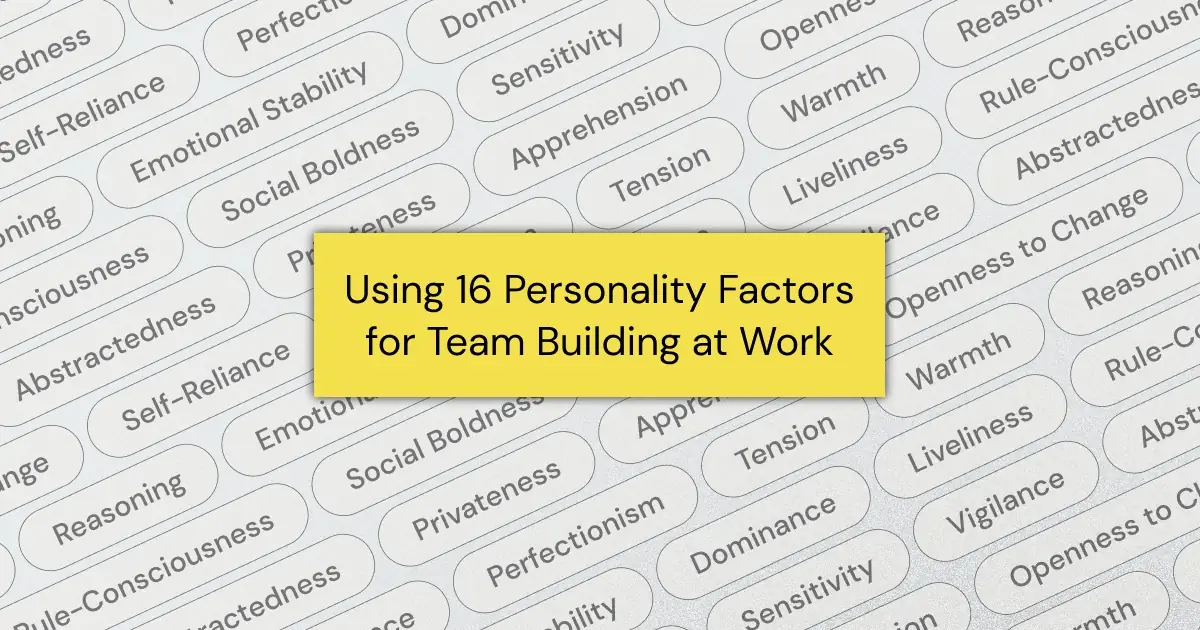Ever wondered why some people excel at crunching numbers while others shine in creative brainstorming? The answer might be wired in our brains, and that's where the Herrmann Brain Dominance Instrument (HBDI) steps in. At its core, HBDI isn't just another personality test; it's a tool that helps unravel the mysteries of how we think and process information.
HBDI is like a map of your mind's preferred routes. Developed by Ned Herrmann, it's based on the idea that our brains have four different quadrants, each responsible for a unique way of thinking. By understanding which quadrant you naturally lean towards, you can gain insights into your personal and professional behaviors, communication style, and decision-making processes.
The real power of HBDI lies in its ability to highlight thinking preferences. Unlike traditional tests that pigeonhole you into a fixed type, HBDI appreciates the complexity of the human brain. It doesn't just tell you who you are; it illuminates how you prefer to think, learn, and communicate. This understanding is a game-changer, especially in team settings where diverse thinking styles can be harnessed to drive innovation and solve complex problems.
In essence, HBDI offers a lens to view your cognitive landscape, allowing you to navigate your personal and professional world more effectively. As you dive deeper into the world of HBDI, you'll discover not only the intricacies of your own mind but also how to appreciate and collaborate with minds that work differently from yours.
Looking for the most popular alternatives to HBDI? Check out the 5 best alternatives to HBDI.
The Four HBDI Quadrants of the Whole Brain Model
Dive into the HBDI Whole Brain Model, and you'll find it's like exploring four different worlds within your mind. This model splits the brain into four quadrants, each representing a distinct style of thinking. It's like having a team of thinkers in your head, each with their own expertise.
A Quadrant - Analytical Thinking (HBDI Blue Quadrant)
The HBDI (Herrmann Brain Dominance Instrument) A quadrant is one of the four parts of the HBDI model, each representing a different thinking style. The A quadrant specifically focuses on Analytical thinking. Here's a brief overview of what the HBDI A quadrant entails:
- Analytical Thinking: This quadrant is characterized by logical, critical, and quantitative thinking. It's where factual data, numbers, and analytical reasoning dominate.
- Key Features: Individuals strong in the A quadrant often exhibit skills in areas like problem-solving, quantitative analysis, and technical understanding. They tend to prefer dealing with concrete facts and data rather than abstract concepts or emotional content.
- Typical Behaviors: People with a preference for this quadrant might enjoy tasks that involve detailed analysis, logical reasoning, and a structured approach to problem-solving. They might excel in roles that require critical thinking, such as in fields of science, engineering, finance, and research.
- Communication Style: Their communication tends to be direct and fact-based. They value precision and are likely to be detail-oriented in their explanations and discussions.
In summary, the HBDI A quadrant represents a thinking style that is logical, data-driven, and analytical. It's an essential component of the HBDI model, helping to paint a complete picture of an individual's cognitive preferences.
Looking for tips and tricks to stand out at work as someone who identifies with the HBDI A quadrant (HBDI Blue)? Check out our guide for thriving at work as an HBDI Blue.
And if you're trying to get along with a colleague who's an HBDI Blue, check out our guide for working with HBDI Quadrant A colleagues!
B Quadrant - Sequential Thinking (HBDI Green Quadrant)
The HBDI B quadrant is another integral part of the Herrmann Brain Dominance Instrument (HBDI) model, focusing on Practical (or "Sequential") thinking. Here's a detailed look at the B quadrant:
- Sequential Thinking: This quadrant emphasizes a structured, organized, and linear way of processing information. It's associated with a methodical approach to tasks and situations.
- Key Features: Individuals with a strong preference for the B quadrant are often detail-oriented and excel in planning, organizing, and implementing processes. They value order and systematic approaches.
- Typical Behaviors: People who favor the B quadrant might enjoy tasks that involve following procedures, scheduling, and detailed planning. They are adept at managing projects, adhering to timelines, and ensuring that all parts of a process are orderly and systematically addressed.
- Communication Style: Their communication tends to be sequential and well-structured. They are likely to present information in a step-by-step manner, focusing on the sequence and details of the information being conveyed.
In essence, the HBDI B quadrant represents a thinking style that is orderly, detail-oriented, and methodical. It plays a crucial role in the HBDI model by highlighting a cognitive preference for sequential and structured thinking processes.
Want practical advice to improve your performance at work as someone who identifies with the HBDI B quadrant (HBDI Green)? Check out our guide for winning at work as an HBDI Green.
If you're trying to get along with a colleague who is an HBDI Green, check out our guide for working with HBDI Quadrant B colleagues!
C Quadrant - Interpersonal Thinking (HBDI Red Quadrant)
The HBDI C quadrant is a vital component of the Herrmann Brain Dominance Instrument (HBDI) model, focusing on Interpersonal (sometimes called "Relational") thinking. Here's what characterizes the C quadrant:
- Interpersonal Thinking: This quadrant is associated with emotional, interpersonal, and kinesthetic processing. It emphasizes feelings, communication with others, and teaching or social interactions.
- Key Features: Individuals with a strong preference for the C quadrant often excel in areas that require empathy, emotional intelligence, and interpersonal skills. They are typically good at understanding and relating to others, and they value emotional expression and social connection.
- Typical Behaviors: People who favor the C quadrant might be drawn to roles that involve teamwork, mentoring, counseling, or any field where interpersonal interaction and emotional understanding are crucial. They are often seen as the 'people persons' in a group, adept at building relationships and fostering collaborative environments.
- Communication Style: Their communication tends to be expressive, empathetic, and oriented towards building rapport and understanding. They often excel in listening and responding to the emotional needs of others.
In summary, the HBDI C quadrant represents a thinking style that is centered on emotional and interpersonal aspects. It highlights a cognitive preference for engaging with and relating to others, emphasizing empathy and social skills in both personal and professional settings.
Want some expert guidance to improve your performance at work as someone who identifies with the HBDI C quadrant (HBDI Red)? Check out our guide to succeeding at work as an HBDI Red.
If you're trying to get along with a colleague or manager who is an HBDI Red, check out our guide for working with HBDI Quadrant C colleagues!
D Quadrant - Imaginative Thinking (HBDI Yellow Quadrant)
The HBDI D quadrant is an essential part of the Herrmann Brain Dominance Instrument (HBDI) model, focusing on Imaginative (or "Innovative") thinking. Here's a closer look at what the HBDI D quadrant (HBDI Yellow) encompasses:
- Imaginative Thinking: This quadrant is characterized by holistic, intuitive, and integrative thinking. It's associated with big-picture thinking, innovation, and conceptualization.
- Key Features: Individuals who have a strong preference for the D quadrant often excel in areas that require creativity, vision, and the ability to see the broader context. They value innovation, are comfortable with complexity, and are often drawn to artistic and strategic endeavors.
- Typical Behaviors: People favoring the D quadrant might enjoy tasks that involve brainstorming, strategic planning, and working with abstract ideas or concepts. They are often the visionaries or the creative minds in a group, adept at thinking outside the box and proposing innovative solutions.
- Communication Style: Their communication tends to be more holistic and less focused on details. They are likely to present the big picture or the end goal, focusing more on concepts and ideas rather than the step-by-step process.
In summary, the HBDI D quadrant represents a thinking style that is imaginative, innovative, and holistic. It plays a crucial role in the HBDI model by highlighting a cognitive preference for creative, big-picture, and intuitive thinking processes.
Need expertise to improve your performance at work as someone who identifies with the HBDI D quadrant (HBDI Yellow)? Check out our guide to unleashing your creative potential at work as an HBDI Yellow.
If you're trying to get along with a colleague or manager who is an HBDI Yellow, check out our guide for working with HBDI Quadrant D colleagues!
Each quadrant brings its own strengths and perspectives. In the HBDI model, the magic happens when these quadrants work together, combining logical analysis with creative insight, and structured planning with empathetic understanding. Understanding these quadrants helps you not only recognize your own thinking preferences but also appreciate the diverse mental landscapes of others around you.
{{inline-cta}}
How the HBDI Test Works
The HBDI assessment is not a test in the traditional sense - there are no right or wrong answers. Instead, it's a journey into how you prefer to think and process information.
The Test Process
The HBDI test begins with a series of questions, each carefully designed to gauge your thinking preferences. You'll encounter scenarios and statements where you'll rate how well they align with your natural way of thinking. This isn't a quick quiz. The test takes time and reflection, as it's all about understanding the nuances of your cognitive style.
Types of Questions
The questions are diverse and thought-provoking. You might be asked to rate your agreement with statements like "I enjoy working with numbers" or "I prefer brainstorming to problem-solving." Each question is a piece of the puzzle, contributing to a comprehensive picture of your thinking style.
Measuring Preferences, Not Abilities
Here's the key: the HBDI test measures your preferences, not your abilities or intelligence. It's not about how good you are at a task, but how much you prefer that type of thinking. For example, you might be excellent at detailed planning (B Quadrant) but naturally gravitate towards creative thinking (D Quadrant).
By the end of the test, you'll have a map of your preferred thinking styles.
Interpreting Your HBDI Results
Once you've completed the HBDI test, you'll receive a unique profile that reveals your thinking preferences. Understanding these results is like decoding a personal blueprint for how you think and process the world around you.
Understanding HBDI Scores:
Your HBDI results come as a set of scores, each representing your preference for one of the four quadrants. High scores in a quadrant indicate a strong preference for that style of thinking. Conversely, lower scores suggest areas that are less natural for you.
Examples of Dominant HBDI Profiles:
- Imagine someone with high scores in A (Analytical) and B (Sequential), but lower in C (Interpersonal) and D (Imaginative). This profile suggests a person who excels in logical analysis and structured planning, but may find emotional connection and big-picture thinking less instinctive.
- Another example is a profile dominant in C and D, but lower in A and B. This person might be a natural at empathetic communication and innovative thinking, yet less inclined towards data analysis and detailed organization.
Balanced vs. Specialized Profiles:
- A balanced HBDI profile shows relatively even scores across all four quadrants. This suggests a versatile thinker who can adapt to various cognitive tasks. However, it doesn't mean they're a master of all - it indicates flexibility in thinking styles.
- A specialized profile, on the other hand, shows high scores in one or two quadrants and lower in others. This highlights specific strengths and potential areas for growth. For instance, someone might be a powerhouse in creative and interpersonal thinking (D and C), but may need to develop more in analytical and sequential aspects (A and B).
Interpreting your HBDI results is more than just understanding where your strengths lie. It's about gaining insight into how you can leverage your natural thinking preferences and how you might develop in areas that don't come as naturally to you. Whether you're a balanced thinker or have a specialized profile, your HBDI results offer a guide to navigating both personal and professional challenges with greater self-awareness.
Applications of HBDI in the Real World
The HBDI isn't just about self-discovery; its real value shines in practical applications, from enhancing team dynamics to personal development. Let's explore how this test makes a real difference in everyday situations.
Using HBDI in Team-Building and Improving Team Dynamics
Imagine a team where everyone knows not only their strengths but also how they think differently from their colleagues. That's what HBDI brings to the table. In team settings, HBDI helps in assigning roles that play to each member's thinking preferences, leading to more efficient and harmonious collaborations. It's also a fantastic tool for conflict resolution. Understanding the thinking styles of team members can foster empathy and more effective communication, turning potential conflicts into productive discussions.
Looking for a personality test that's specifically designed for team building? Try TeamDynamics, the personality test for modern teams.
Benefits of HBDI in Personal Development
On a personal level, HBDI is like a roadmap for self-improvement.
It helps you identify areas where you might want to develop further, like boosting your analytical skills or nurturing your creative side. This self-awareness can be a catalyst for career advancement, as you become more adept at tasks that previously seemed challenging.
Profession-Specific HBDI Scores
HBDI profiles can often reflect the demands of different professions.
For instance, accountants might typically show higher scores in the A (Analytical) and B (Sequential) quadrants, aligning with their need for precision and structured thinking. Artists, on the other hand, might score higher in the D (Imaginative) quadrant, reflecting a preference for creative and big-picture thinking.
However, it's crucial to remember that individuals vary, and there's no one-size-fits-all profile for any profession. An artist could be detail-oriented, and an accountant could be highly creative.
In essence, the HBDI test offers valuable insights that can be applied in various aspects of life. Whether it's making a team more cohesive or helping individuals grow in their careers, the understanding of thinking preferences provided by HBDI can be a powerful tool in navigating the complexities of both professional and personal interactions.
Critiques and Limitations of HBDI
While the HBDI provides valuable insights, like any tool, it's not without its critiques and limitations. Understanding these aspects is crucial for a balanced view of what the HBDI can and cannot offer.
Addressing Common Criticisms
Oversimplification of Brain Functions: One of the most voiced criticisms is that HBDI oversimplifies how the brain works. The brain is a complex organ, and boiling down its functions to four quadrants can seem reductive. Critics argue that human thinking and behavior are too multifaceted to be captured fully by such a model.
Risk of Labeling: Another concern is the potential for HBDI results to inadvertently label individuals, leading to a fixed mindset about one’s capabilities. This is contrary to the evolving understanding of neuroplasticity, where the brain's ability to adapt and change is recognized.
Limitations in Predicting Behavior or Job Performance
Not a Behavioral Predictor: It's important to note that HBDI scores are not predictors of behavior. While they indicate thinking preferences, they don't necessarily translate into how a person will act in every situation. Human behavior is influenced by a multitude of factors, including environment, experiences, and emotions.
Not a Job Performance Indicator: Similarly, HBDI results should not be used as sole indicators of job performance or suitability. Skills, knowledge, experience, and other personality traits play significant roles in job performance. Relying only on HBDI for recruitment or promotion decisions is therefore not advisable.
In Conclusion
The HBDI personality test is a powerful tool for understanding and harnessing the diverse ways in which we think. However, it's essential to remember that it's just one piece of the puzzle when it comes to comprehending the complexity of human cognition and behavior. Like any personality assessment, the HBDI should be used thoughtfully, in conjunction with other tools and a well-rounded understanding of individual differences. In doing so, we can better appreciate the unique thinking styles that each of us brings to the table, fostering a more inclusive and productive environment in both our personal and professional lives.




.png)





































